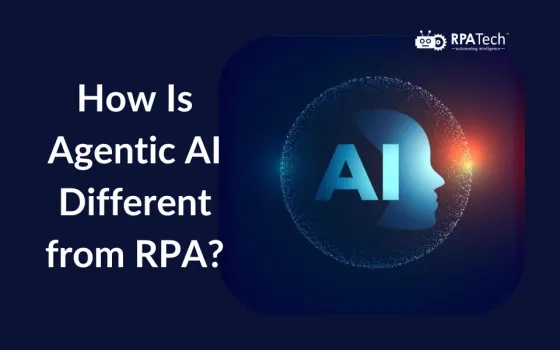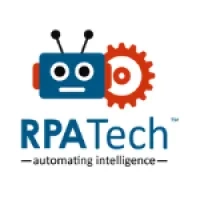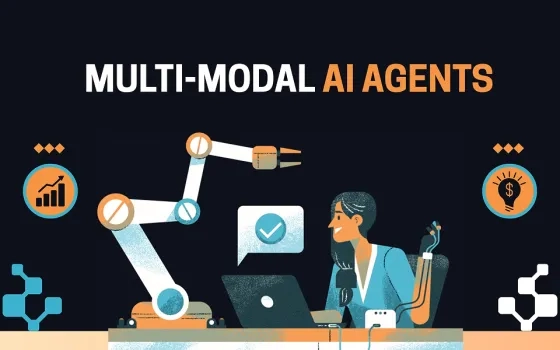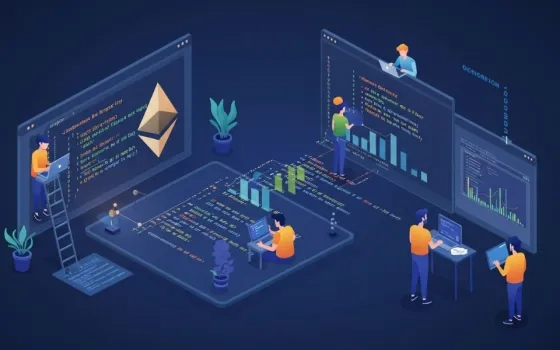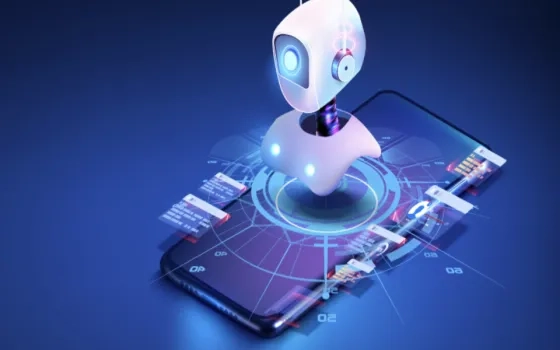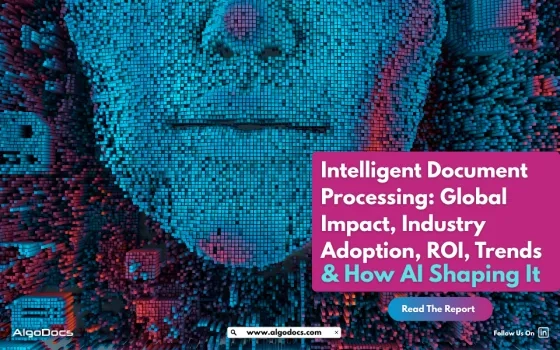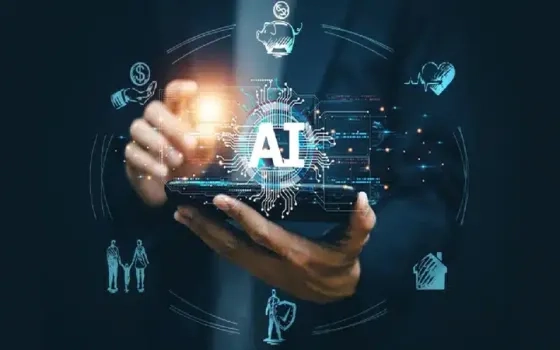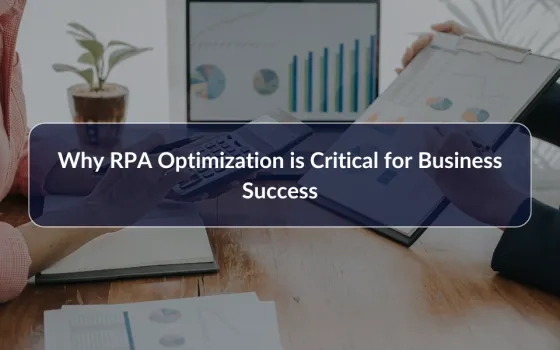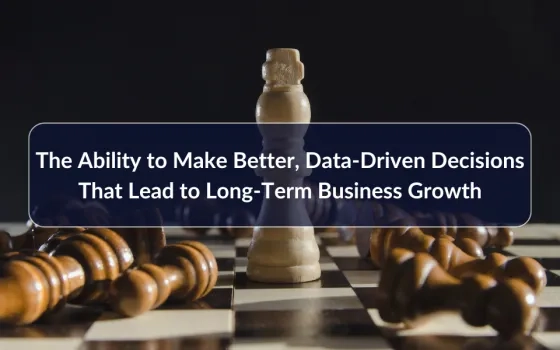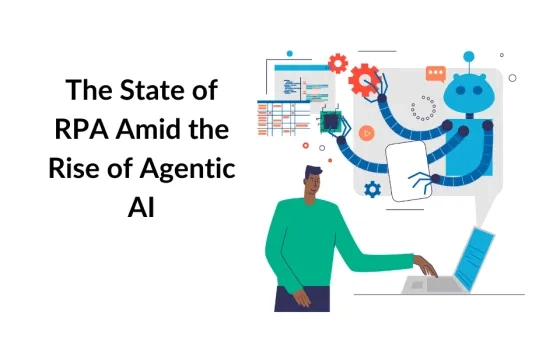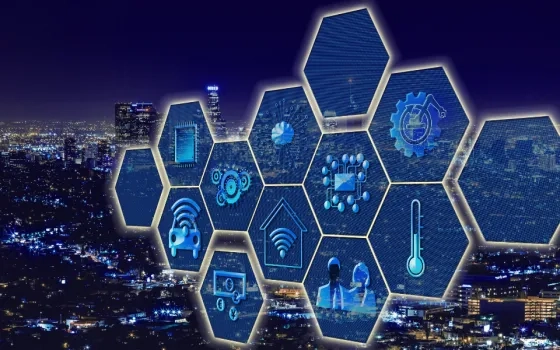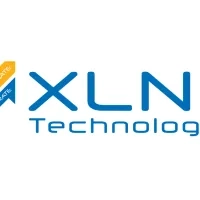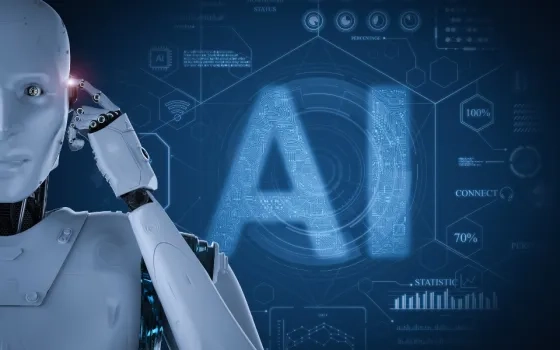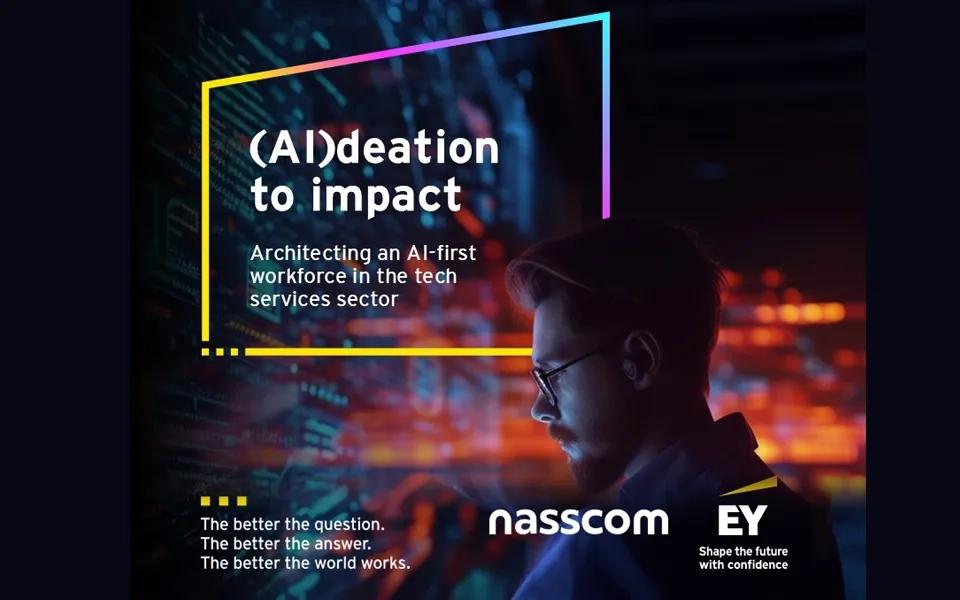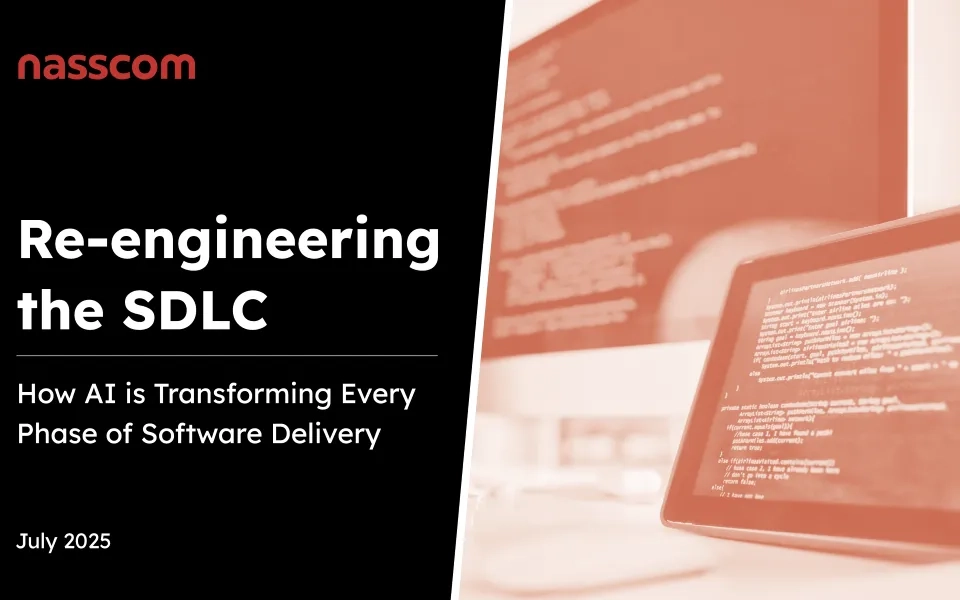As automation continues to evolve, businesses are exploring more advanced technologies beyond traditional robotic process automation (RPA). One such innovation is Agentic AI—an emerging paradigm that enhances automation with greater autonomy, decision-making capabilities, and adaptability.
While RPA is widely used for automating repetitive tasks, Agentic AI introduces intelligence and proactiveness into workflows. In this article, we'll break down the key differences between Agentic AI and RPA, their applications, and how businesses can leverage them for digital transformation.
What is RPA?
Robotic Process Automation (RPA) is a transformative software technology designed to automate structured, rule-based tasks, which were traditionally performed by humans. RPA mimics human actions and interactions with digital systems, enabling businesses to automate repetitive processes in a variety of domains, from finance to customer service. RPA bots can operate across different applications and systems, executing tasks without human intervention.
These bots can handle several functions, such as:
- Performing Data Entry and Data Extraction: RPA bots can automatically input data into forms or databases, as well as extract data from documents or websites.
- Copying and Pasting Information Between Systems: Bots can copy data from one platform (e.g., a spreadsheet) and paste it into another (e.g., an ERP system), eliminating manual effort.
- Processing Transactions and Generating Reports: RPA can automate tasks like processing invoices or updating transaction records, and then automatically generate reports based on the processed data.
- Handling Structured Workflows with Predefined Rules: RPA follows structured processes with fixed logic, like processing customer orders based on specific conditions or rules set by the organization.
The key benefit of RPA lies in its ability to handle repetitive, mundane tasks quickly and accurately. It frees up human employees to focus on more complex, strategic work by automating tasks that don’t require human judgment or creativity.
Key Features of RPA
Rule-Based Execution
RPA operates based on structured logic and predefined rules. This means that the tasks performed by RPA bots are dictated by specific instructions and conditions that remain consistent across executions. RPA works best with well-defined, predictable processes where inputs and outputs can be easily mapped.
For example, if a business needs to validate customer data by checking if it matches a standard format, RPA bots will follow the rule (e.g., “if the customer’s address includes a zip code, proceed to step 2”). Since RPA operates in this structured manner, it ensures that the automation process is highly reliable and can be executed without deviation.
Non-Adaptive
While RPA bots excel at repetitive tasks, they are non-adaptive, meaning they can’t learn or adapt based on new inputs or changes in the environment unless explicitly programmed. If an unexpected change occurs in the system (such as a shift in the format of data), an RPA bot will not be able to adjust its process autonomously. Instead, the bot needs to be manually reprogrammed or updated by developers to accommodate the new conditions. This is different from more advanced artificial intelligence (AI) systems, which can adapt and evolve based on experience and new data.
For instance, if a company changes its invoice format, an RPA bot that processes invoices will need an update to understand and handle the new format, as it cannot "learn" to process the change on its own.
Requires Structured Data
RPA thrives on structured data, meaning data that is well-organized and easily digestible by machines. Structured data typically comes in tabular formats, like spreadsheets, or other clearly defined formats such as XML or CSV files. RPA is not well-suited for unstructured data, such as raw text or images, which may require advanced AI techniques for understanding and processing.
For example, if a bot is tasked with processing customer orders, it works best when the order data is entered in a standardized form, where fields like customer name, address, and order items are consistently organized in a table format. If the data is unorganized, like a hand-written order, the bot would struggle to understand it without human intervention or additional processing tools.
Ideal for Repetitive Tasks
RPA is particularly effective at automating repetitive tasks that follow a predictable and structured pattern. Tasks that are high in volume and low in complexity are ideal candidates for automation with RPA. Examples include data entry, account reconciliation, and email responses. These are activities that employees typically perform every day and often feel monotonous or time-consuming.
By automating such tasks, organizations can reduce the amount of time spent on mundane work, improve accuracy (by eliminating human error), and allow employees to focus on more strategic tasks that require critical thinking.
RPA is especially effective in areas such as:
- Back-Office Automation: In functions like finance, HR, and accounting, RPA can manage large volumes of repetitive administrative tasks, such as payroll processing or billing.
- Finance: Automating activities like financial reporting, audit preparation, or transaction matching saves time and reduces errors.
- Human Resources (HR): Automating onboarding workflows or benefits administration helps HR departments focus on strategic workforce planning.
- Customer Service: Automating routine customer interactions like answering frequently asked questions (FAQs) improves customer service efficiency.
RPA Use Cases
Automating Invoice Processing in Finance
In finance departments, RPA can automate the entire process of handling invoices. The bot can extract relevant information from invoices, validate the data, and match it to the purchase order before entering the data into the financial system. This eliminates manual intervention, reduces errors, and accelerates processing times.
Data Migration Between Legacy and Modern Systems
Many organizations still rely on legacy systems that may not easily integrate with newer technologies. RPA can automate the migration of data between old and new systems without needing significant manual work. The bot can extract data from one system, transform it to meet the format of the target system, and upload it automatically, ensuring data consistency and integrity throughout the process.
Customer Support Automation (e.g., Responding to FAQs)
RPA can be used to automate customer support tasks, such as responding to frequently asked questions (FAQs). By leveraging predefined responses, bots can automatically reply to customers' inquiries, providing instant, 24/7 support without human intervention. This reduces the workload on customer service teams and enhances customer satisfaction through quick resolutions.
Employee Onboarding Workflows in HR
Onboarding new employees typically involves a series of repetitive tasks, such as verifying documents, creating email accounts, and enrolling in benefits programs. RPA can automate these workflows, ensuring that every step is completed consistently and efficiently. HR staff can then focus on more complex aspects of employee engagement, such as orientation and training.
What Is Agentic AI?
Agentic AI represents a new frontier in the world of artificial intelligence, where systems are not just designed to follow predefined rules or scripts, but instead operate with autonomy, adaptability, and decision-making capabilities. Unlike Robotic Process Automation (RPA), which is restricted to executing tasks based on fixed, structured rules, Agentic AI can learn from its environment, reason through problems, and make independent decisions that can evolve over time.
Agentic AI systems are capable of understanding and adapting to dynamic, unpredictable environments. They are typically built on advanced machine learning (ML) and deep learning techniques, allowing them to continuously improve their performance as they process more data. This ability to "think" and adjust based on context sets Agentic AI apart from traditional automation solutions, opening up a vast range of possibilities across industries and domains.
For example, while RPA might simply follow a set sequence of instructions to process invoices, Agentic AI might assess varying invoice formats, learn to identify discrepancies and adapt to new processes or changes in data inputs without requiring manual updates to the system.
Key Features of Agentic AI
Autonomous Decision-Making
One of the most defining features of Agentic AI is its ability to make autonomous decisions. This means that, rather than simply following a pre-programmed set of rules, Agentic AI can analyse situations or data and determine the optimal course of action based on its understanding of the context. It doesn’t require human intervention to make decisions—whether it's adjusting a process or solving a problem.
For example, in an AI-powered sales assistant, the system can assess customer preferences, analyse available inventory, and recommend personalized products or services to the customer—all without requiring direct input from a human agent. The system continuously monitors various factors and takes actions that align with its understanding of the best outcome, considering available data.
Adaptive Learning
Agentic AI can learn and improve over time using machine learning and real-time feedback. This feature allows it to continuously refine its processes, making it increasingly efficient and capable of handling new or evolving challenges. As it interacts with the environment, Agentic AI "learns" from its experiences, adjusting its behaviour based on feedback and new data inputs.
For instance, in an AI-powered cybersecurity monitoring system, Agentic AI might initially be trained to detect known threats. Over time, it can learn to recognize new types of threats or unusual patterns in network traffic based on real-time data. As it continues to monitor and analyse incoming information, it improves its detection capabilities, making it more proficient at identifying potential risks and responding proactively.
This adaptability makes Agentic AI systems ideal for environments where conditions are constantly changing and where rigid rule-based systems would struggle to keep up.
Handles Unstructured Data
Unlike RPA, which requires structured data to operate efficiently, Agentic AI can handle unstructured data. Unstructured data includes a wide range of information types, such as emails, images, documents, and conversations. This capability is powered by natural language processing (NLP) and computer vision, which allow the AI to process and understand data in formats that are less predictable or predefined.
For example, an AI-powered document processing system could read and understand different types of documents—such as contracts, invoices, or medical records—by analysing text, interpreting context, and making sense of variable formats. It can classify documents, extract relevant information, and even understand nuanced language, such as identifying terms of an agreement or spotting key pieces of information in a contract.
Agentic AI's ability to work with unstructured data opens up vast opportunities in fields like customer support, where the AI can analyse conversations (chat or voice) and understand the intent behind customer inquiries, or in healthcare, where it can analyse medical images and assist in diagnostics.
Proactive
While RPA systems focus primarily on executing tasks as instructed, Agentic AI goes beyond simply following steps and becomes proactive in its decision-making. This means that instead of waiting for human input or a trigger event to initiate an action, Agentic AI anticipates needs, identifies inefficiencies, and makes adjustments in real-time to optimize workflows dynamically.
For instance, in the context of a customer service system, an Agentic AI might proactively reach out to customers based on predictive models, offering assistance, or solving issues before they escalate. It might also optimize its responses over time by learning from past interactions to improve both speed and relevance.
By being proactive, Agentic AI helps create more responsive and efficient systems that are capable of continuously improving performance without needing manual oversight or intervention.
Agentic AI Use Cases
AI-Driven Chatbots that Understand and Respond to Complex Queries
AI chatbots powered by Agentic AI go beyond simple question-and-answer exchanges. They are capable of understanding complex queries and engaging in dynamic conversations with users. Using NLP and machine learning, these chatbots can interpret the meaning behind a customer's request, determine the best response, and offer personalized solutions based on the context.
For example, a customer asking for technical support might not simply ask the same question as others. An AI-powered chatbot can analyse the specific nature of the query, take into account past interactions, and offer tailored solutions that fit the customer's needs—whether it's a troubleshooting guide, a direct solution, or even escalating the issue to a human agent if necessary.
Automated Cybersecurity Monitoring that Detects Threats and Takes Action
Agentic AI can be used to monitor cybersecurity threats in real-time, using advanced pattern recognition to detect unusual activity or security breaches. Unlike traditional security systems that may rely on predefined rules, Agentic AI can learn to detect new types of attacks by recognizing evolving patterns of behaviour, such as zero-day exploits or phishing attempts.
Once a potential threat is identified, the AI can take autonomous action, like isolating affected systems, notifying security teams, or even deploying countermeasures to mitigate the threat. This proactive approach enables faster response times and better protection against emerging threats.
AI-Powered Sales Assistants that Suggest Personalized Deals to Customers
In the field of sales and marketing, Agentic AI can drive highly personalized customer experiences by analysing past interactions, preferences, and behavioural data to recommend tailored products or services. The AI assistant might analyse browsing history, purchase behaviour, and customer profiles to suggest products that are most likely to be of interest.
This use of Agentic AI not only boosts sales by providing highly relevant recommendations but also enhances customer satisfaction, as it allows businesses to meet individual customer needs more accurately and promptly.
Intelligent Document Processing that Classifies, Extracts, and Interprets Data
Agentic AI systems are increasingly being used in industries that deal with large volumes of unstructured documents, such as legal, healthcare, and financial sectors. By leveraging NLP and machine learning, AI-powered systems can automatically classify documents, extract key data, and interpret complex information.
For example, in the legal industry, Agentic AI might read through contracts or case files, identify relevant clauses, extract critical data points (e.g., dates, parties involved), and even make recommendations based on the content. Similarly, in healthcare, it could analyse medical records, interpret physician notes, and extract critical diagnostic information, saving time and reducing human error.
Key Differences Between Agentic AI and RPA
|
Feature
|
RPA
|
Agentic AI
|
|
Nature of Automation
|
Rule-based and predefined
|
Adaptive and decision-making
|
|
Data Handling
|
Works with structured data
|
Handles both structured & unstructured data
|
|
Learning Ability
|
No learning; follows set rules
|
Continuously improves using AI models
|
|
Scalability
|
Requires extensive reprogramming for new tasks
|
Scales dynamically by learning from new data
|
|
Decision-Making
|
Limited to preset rules
|
Can assess situations and take proactive actions
|
|
Complexity Handling
|
Best for repetitive, predictable tasks
|
Excels in dynamic, evolving environments
|
While RPA is effective for process automation, Agentic AI is a cognitive automation approach that enables intelligent, autonomous decision-making.
Should Businesses Replace RPA with Agentic AI?
The question of whether businesses should replace Robotic Process Automation (RPA) with Agentic AI is an important one as both technologies offer unique strengths, but the short answer is: Not necessarily. While Agentic AI brings significant advancements in terms of adaptability and decision-making, RPA still holds significant value for specific use cases. Let’s break down why this is the case and why a hybrid approach could often be the most beneficial solution.
RPA vs. Agentic AI: Understanding the Core Differences
RPA: Structured, Repetitive Tasks That Don’t Require Intelligence
RPA excels in environments where tasks are highly structured, rule-based, and repetitive. These tasks often follow predictable patterns with clearly defined inputs and outputs, which makes them perfect for automation with RPA. For instance, RPA is great for:
- Data entry into pre-formatted systems.
- Data extraction from structured documents like spreadsheets or databases.
- Transaction processing and report generation based on fixed rules.
Since RPA follows a set of predefined steps, it doesn’t need intelligence or learning capabilities to function effectively. It simply automates the task as programmed, which makes it efficient for operations where human intervention is not necessary. RPA doesn’t involve decision-making or learning but focuses on speed, accuracy, and consistency for repetitive workflows.
For example, RPA might be ideal for automating the onboarding process for employees, where each step, such as filling out forms or adding employee data into a system, follows a fixed and consistent pattern.
Agentic AI: Dynamic, High-Level Decision-Making and Adaptation
On the other hand, Agentic AI is built to handle dynamic and complex tasks that require the ability to learn, adapt, and make decisions based on real-time data and changing circumstances. Unlike RPA, Agentic AI can evaluate situations, assess a variety of factors, and choose an optimal course of action on its own.
Agentic AI is ideal for tasks that:
- Require judgment or the ability to reason (e.g., detecting fraud, analysing trends, or providing recommendations).
- Involve unstructured data, such as emails, social media interactions, or documents in free text form.
- Involve adaptive learning, where the system continuously improves based on new data and feedback.
For instance, Agentic AI would be better suited for detecting fraud in financial transactions or evaluating insurance claims, where the decision-making process is not linear, and the system needs to handle ambiguity, learn from new patterns, and evolve its decision criteria over time.
Why Not Replace RPA with Agentic AI?
While Agentic AI brings sophisticated decision-making capabilities and the ability to adapt to new challenges, it doesn't mean that businesses should entirely replace RPA. Here's why:
- RPA is Cost-Effective and Highly Efficient for Simple Tasks
RPA is more cost-effective when it comes to automating simple, repetitive tasks. These types of tasks don’t require the intelligence or complexity that Agentic AI offers. Since RPA bots are designed to follow predefined steps, they can automate these tasks without the need for extensive training or real-time learning.
For example, processing hundreds of invoices daily with predefined steps is far more efficient with RPA. The cost and time required to deploy Agentic AI to do this simple task may not be justifiable, especially when RPA handles it perfectly.
- RPA is More Accessible for Many Organizations
RPA systems are typically easier to implement and require less technical expertise compared to Agentic AI, which can be more complex to develop and integrate. Organizations without a deep understanding of AI technologies can still deploy RPA to automate basic processes without requiring AI-specific knowledge or infrastructure.
- RPA is Less Resource-Intensive
While Agentic AI often requires a significant amount of data, computational power, and ongoing maintenance to function properly (such as continuous retraining to adapt to new data), RPA bots are much less resource-intensive. RPA systems typically don’t require powerful hardware or specialized AI infrastructure, making them a more scalable and resource-friendly option for businesses just looking to streamline repetitive tasks.
- Not All Tasks Require AI-Level Decision-Making
Many tasks in business operations simply don’t require the level of decision-making or intelligence that Agentic AI offers. In these cases, RPA is the more practical solution. Automating a simple process like generating payroll reports or organizing inventory lists doesn’t require learning, reasoning, or adapting—just a clear sequence of actions, which RPA does efficiently.
A Hybrid Approach
Given the strengths and limitations of both technologies, many enterprises are moving toward a hybrid approach—integrating Agentic AI with RPA to get the best of both worlds. By combining the rule-based efficiency of RPA with the adaptability and intelligence of Agentic AI, businesses can automate a wider range of tasks and improve overall workflow efficiency.
Example: Insurance Industry
A great example of how this hybrid approach works is an insurance company. The company might use RPA to handle the more routine tasks like generating policy documents, inputting customer details into the system, or sending policy renewal reminders. These tasks are straightforward, rule-based, and repetitive, making them ideal candidates for RPA.
However, the insurance company could use Agentic AI to perform tasks that require higher-level analysis and decision-making. For example, Agentic AI could analyse insurance claims for fraud detection, assess risk based on historical data, or offer personalized recommendations to policyholders based on their unique needs and behaviour.
By using RPA for administrative and repetitive tasks and Agentic AI for tasks that require learning, reasoning, and decision-making, the company achieves significant efficiency gains while ensuring that complex, dynamic tasks are handled intelligently.
Instead of choosing between RPA and Agentic AI, businesses should focus on understanding the nature of their tasks and identifying which technology is best suited for each. RPA continues to be a valuable tool for automating highly repetitive, structured processes that don’t require adaptive decision-making. On the other hand, Agentic AI excels in environments where tasks are dynamic, involve unstructured data, and require continuous learning and decision-making.
The key takeaway is that businesses don’t need to replace RPA with Agentic AI—a hybrid approach is often the most effective solution, combining the efficiency of RPA with the intelligence of Agentic AI to tackle a broader range of tasks and optimize business processes.
Conclusion
While both RPA and Agentic AI fall under automation, they serve different purposes. RPA excels at handling repetitive, structured tasks, whereas Agentic AI offers autonomy, adaptability, and decision-making capabilities.
As AI technologies continue to evolve, businesses should evaluate where rule-based automation suffices and where AI-driven intelligence is necessary. The future lies in combining RPA and Agentic AI for end-to-end intelligent automation.



